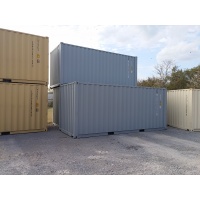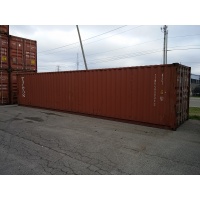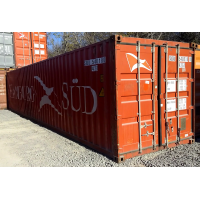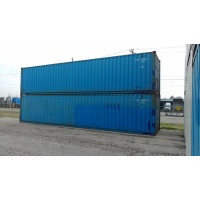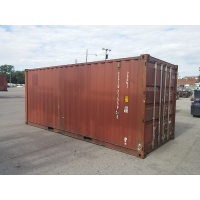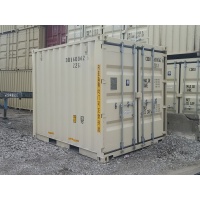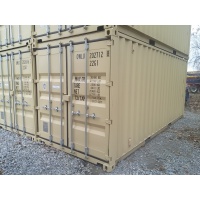As this blighted year nears its end, three maritime journalists were asked to assess the industry as it enters a critical period in history. Change is afoot and 2021 is likely to herald a new beginning for some, writes Nick Savvides, managing editor at Container News.
After a year such as this one it is always with some trepidation that we look forward to 2021. With more than 66 million people infected with the Covid-19 virus and 1, 521,013 deaths at the last count, as a result of those infections, the fear is real.
These figures are, however, just the tip of the iceberg in the sense that what we cannot count as accurately is the destruction to livelihoods, economies and, just as importantly the effect on global supply chains.
It was the questions on the supply chains that were pertinent last Thursday, 3 December, when my learned colleagues from competing publications, Mike Wackett from the Loadstar and Hariesh Manaadiar of Shipping and Freight Resource, with yours truly made an appearance on The New York Supply Chain Meet Up, battling to make sense of the year gone by. And perhaps more pertinently, straining to see what horrors, if any, lie ahead through a form of analysis known as a fireside chat.
Armed with a single malt, in Mike’s case, a suitable maritime themed mug of coffee from Hariesh, and a Spitfire mug of tea from the other fella, we set about putting the supply chain to rights.
Although there was a light-hearted atmosphere the conversation was pertinent and on point. This year’s events are well documented for the effects on the supply chain as well as on broader societies. Looking backwards can only serve as the preamble necessary to understand the immediate future.
So the three wise monkeys (sorry Mike and Hariesh you’ve been linked by association) set about laying out the foundation for what may lay ahead for the industry on which we report.
It is clear that while the cargo owners have had, and are still having, a torrid time the shipping lines have used the opportunity to make a welcome profit. Rates have mushroomed out of control, until the authorities stepped in, and the use of cancellations of services, blank sailings, caused a severe shortage of equipment in the key export region of Asia.
Moreover the surge in demand following a slump in the early lockdown period in the US led to congestion at US ports for which the shippers are paying for dearly. Demurrage fees, like the rates have mushroomed, and in fact this is the case in many parts of the world as shippers in Afghanistan and Pakistan will testify.
Is this a sustainable model. None of the three panellists believed it was likely to continue at the current levels much beyond Chinese New Year. Which, in case you’re wondering falls on 12 February next year. The year of the ox, I’m reliably informed, offer success to those who work hard.
This is a trait that will sit well with those in the supply chain, particularly those seafarers that have survived the pandemic, while being forced to serve on the vessel that they were assigned to, often for more than a year. Those oxen are already working hard and are deserving of our gratitude.
More to the point the panellists believe that the contract negotiations, ongoing in the European trades, and due to start in the first quarter of 2021 will be based on the spot rate levels at the time. Spot rates in the two major trade lanes are substantially higher than they were a year ago. In the case of the Asia to USWC trade the FBX was US$1,349/FEU on the 6 December. Today it stands at US$3,874/FEU.
On the Asia to North Europe trades the rate increases have been steep, standing at US$1,497/FEU a year ago, the rates had struggles to US$2,205/FEU by late September. Still dawdling at the September level in mid-November the rates saw a massive surge, climbing steeply to US$3,443/FEU by the 4 December and appear to be rising still.
On this basis the contract negotiations could be difficult for shippers who may prefer to conclude shorter contracts, with less committed volumes, with a view to playing the more volatile spot market.
Traders will need to balance the levels of demand over the costs as the demand may, in the end, see the priorities for the shippers change from pricing to making sure their cargo manages to make it onto the vessel and can be picked up and delivered in a timely way at the port of destination. None of this is guaranteed at the moment, except by CMA CGM’s new SEAPRIORITY service out of Yantian to the US West Coast, which offers a money-back guarantee if the service level promised, is not met.
It is very likely that the days of low-cost shipping have ended and the new normal, for want of a better phrase (and I really do want a better phrase) will see higher rates permanently in place. Not least because the industry will need to pay for the digital revolution and the decarbonisation process that is likely to last for, at least, the next 30 years.
Increasing costs have not appeared to see freight forwarders stumble, and while TNYSCMU panellists felt that the forwarders’ space was being crowded by the shift to digitalisation, the need for forwarders would, it was felt remain. Not least because the physical movement of goods is a complex business and that requires skill and experience to move some cargo successfully to its destination.
It was in a recent conversation with a former Maersk employee, who had also had a hand in digitalising the banks, he said that the introduction of technology in the finance sector was comparatively easy, “because it was digital anyway.” That is finance is notional, a numbers game.
Digitalising the freight industry is far more complex because the digital process must be followed by the physical movement of goods and co-ordinating the movement of goods with the movement of funds, customs clearance and the many other stages that cargo must go through after leaving its factory of origin, to when it arrives at its retail outlet.
It is that physicality that will keep the forwarders in business and maintain the connection between the lines and the shippers. Although the market share for forwarders may fall, according to Maersk around 42% of its cargo is booked by forwarders, it seems the panellists feel that level is set to decline.
Whether that will happen over the coming year appears to be unlikely, rather that prophecy is more of a short to medium term view. What is clear, and seemed to be agreed from all sides, was that the pandemic had changed everything, driving change along the supply chain and telescoping the digital process. And that has not been seen before in the maritime sector.





